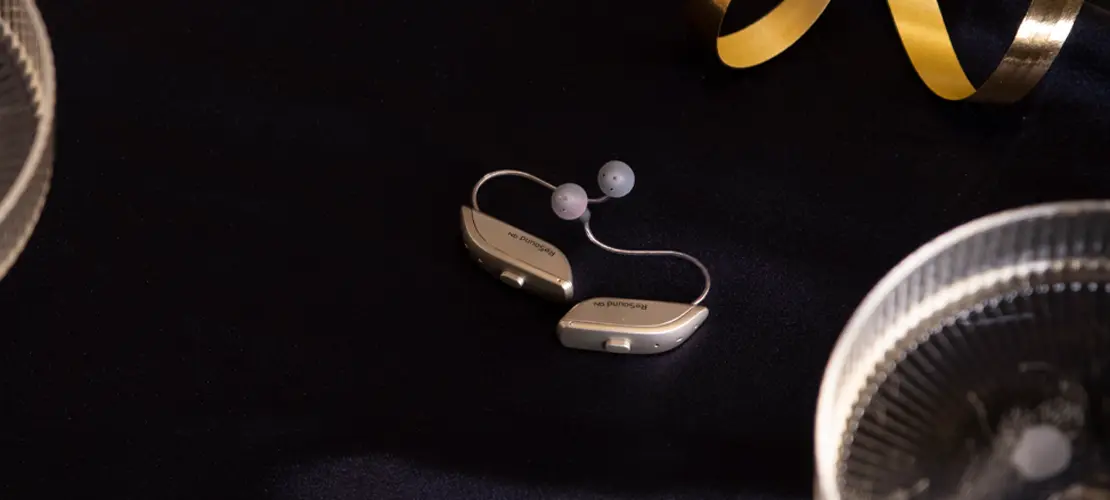
শ্রবণযন্ত্র রক্ষণাবেক্ষণের সঠিক উপায় – হিয়ারিং এইড মেইনটেন্যান্স গাইড
পরিচিতি
শ্রবণযন্ত্র (Hearing Aid) হলো একটি গুরুত্বপূর্ণ চিকিৎসা ডিভাইস যা শ্রবণ সমস্যাগ্রস্ত ব্যক্তিদের জীবনে আলো জ্বালায়। এই যন্ত্রটি ব্যবহারের ফলে কেউ আবার স্বাভাবিক জীবনে ফিরে যেতে পারেন। তবে শ্রবণযন্ত্র দীর্ঘদিন ভালোভাবে কাজ করার জন্য প্রয়োজন সঠিক রক্ষণাবেক্ষণ ও যত্ন।
১. প্রতিদিন পরিষ্কার রাখুন
- নরম শুকনো কাপড় দিয়ে যন্ত্রটি মুছে নিন।
- কোনো তরল সাবান, অ্যালকোহল বা পানি ব্যবহার করবেন না।
- ইয়ার মোল্ড আলাদা করে ব্রাশ দিয়ে পরিষ্কার করুন।
- মাইক্রোফোন বা স্পিকারে ময়লা জমলে টুল দিয়ে পরিষ্কার করুন।
২. আর্দ্রতা থেকে রক্ষা করুন
- ড্রাইং কিট বা ডিহিউমিডিফায়ার বক্সে রাখুন।
- গোসল বা সাঁতারে যন্ত্র খুলে রাখুন।
- বর্ষাকালে বিশেষ সতর্ক থাকুন।
৩. ব্যাটারির যত্ন
- ব্যাটারি চেম্বার খোলা রাখুন।
- পুরাতন ব্যাটারি ব্যবহার করবেন না।
- ব্যাটারি লিক বা দুর্বল হয়ে গেলে তা পরিবর্তন করুন।
৪. নিয়মিত পেশাদার চেকআপ করুন
অডিওলজিস্ট বা প্রশিক্ষিত টেকনিশিয়ানের সাহায্য নিন। প্রতি ৬ মাস পরপর পেশাদার সার্ভিস করিয়ে নিন।
৫. যন্ত্রটি সঠিকভাবে সংরক্ষণ করুন
- শুষ্ক ও নিরাপদ স্থানে রাখুন।
- রোদ বা গরম জায়গা এড়িয়ে চলুন।
- বাচ্চাদের নাগালের বাইরে রাখুন।
৬. ফিল্টার ও টিউব পরিবর্তন
- ওয়্যাক্স গার্ড বা ফিল্টার নিয়মিত চেক করুন।
- ইয়ারমোল্ড শক্ত হয়ে গেলে পরিবর্তন করুন।
- শব্দ বিকৃতি বা হুইসেলিং হলে ফিল্টার পরিস্কার বা পরিবর্তন করুন।
৭. সফটওয়্যার আপডেট (যদি প্রযোজ্য)
ডিজিটাল হিয়ারিং এইডে অ্যাপ বা সফটওয়্যার থাকলে নিয়মিত আপডেট করুন। এতে যন্ত্রের পারফরমেন্স উন্নত হয়।
৮. হিয়ারিং স্টোরে রক্ষণাবেক্ষণ সুবিধা
Hearing Store-এ রয়েছে:
- অভিজ্ঞ অডিওলজিস্ট ও টেকনিশিয়ান
- ব্যাটারি, টুল, ফিল্টার, এক্সেসরিজ
- ড্রাইং কিট ও আধুনিক রক্ষণাবেক্ষণ সুবিধা
📞 যোগাযোগ: 01859244144
🌐 ওয়েবসাইট: www.hearingstore.com.bd
🏢 ঠিকানা: ১৫২/২A-২, রওশন টাওয়ার (২য় তলা), গ্রিন রোড সিগনাল, পান্থপথ, ঢাকা-১২০৫
উপসংহার
শ্রবণযন্ত্রের সঠিক যত্ন ও রক্ষণাবেক্ষণ করলে এটি দীর্ঘদিন কার্যকরভাবে কাজ করে। প্রতিদিন কিছু সময় ব্যয় করে যন্ত্রের যত্ন নিন এবং যেকোনো সমস্যা হলে Hearing Store-এ যোগাযোগ করুন।
আপনার শ্রবণ ভালো থাকুক, জীবন থাকুক শব্দে ভরা! 🎧
— Hearing Store

